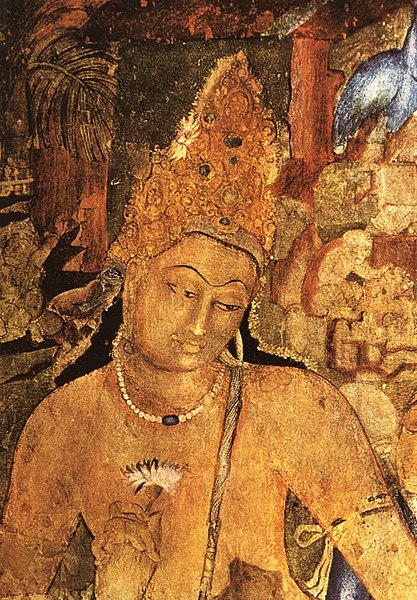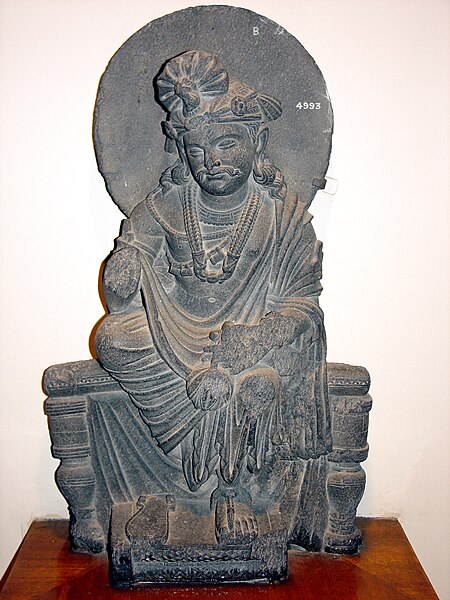The Lokottaravāda was one of the early Buddhist schools according to Mahayana doxological sources compiled by Bhāviveka, Vinitadeva and others, and was a subgroup which emerged from the Mahāsāṃghika.
The Lokottaravāda held there were innumerable pure lands of buddhas and bodhisattvas.
Bodhisattva statue from a Buddhist monastery in Afghanistan, a region where the Lokottaravāda were known to be prominent
Tibetan painting of Amitābha in his pure land, Sukhāvatī
Mahāyāna is a term for a broad group of Buddhist traditions, texts, philosophies, and practices developed in ancient India. It is considered one of the three main existing branches of Buddhism, the others being Theravāda and Vajrayāna. Mahāyāna accepts the main scriptures and teachings of early Buddhism but also recognizes various doctrines and texts that are not accepted by Theravada Buddhism as original. These include the Mahāyāna sūtras and their emphasis on the bodhisattva path and Prajñāpāramitā. Vajrayāna or Mantra traditions are a subset of Mahāyāna which makes use of numerous tantric methods Vajrayānists consider to help achieve Buddhahood.
An illustration in a manuscript of the Aṣṭasāhasrikā Prajñāpāramitā Sūtra from Nalanda, depicting the bodhisattva Maitreya, an important figure in Mahāyāna
The Five Tathāgatas in Shishoin Temple (Tokyo). A unique feature of Mahāyāna is the belief that there are multiple Buddhas which are currently teaching the Dharma
Mahāyāna Buddhist triad, including Bodhisattva Maitreya, the Buddha, and Bodhisattva Avalokiteśvara. 2nd–3rd century CE, Gandhāra
Seated Avalokiteshvara bodhisattva. Gandharan, from Loriyan Tangai. Kushan period, 1st – 3rd century CE. Indian Museum, Calcutta







